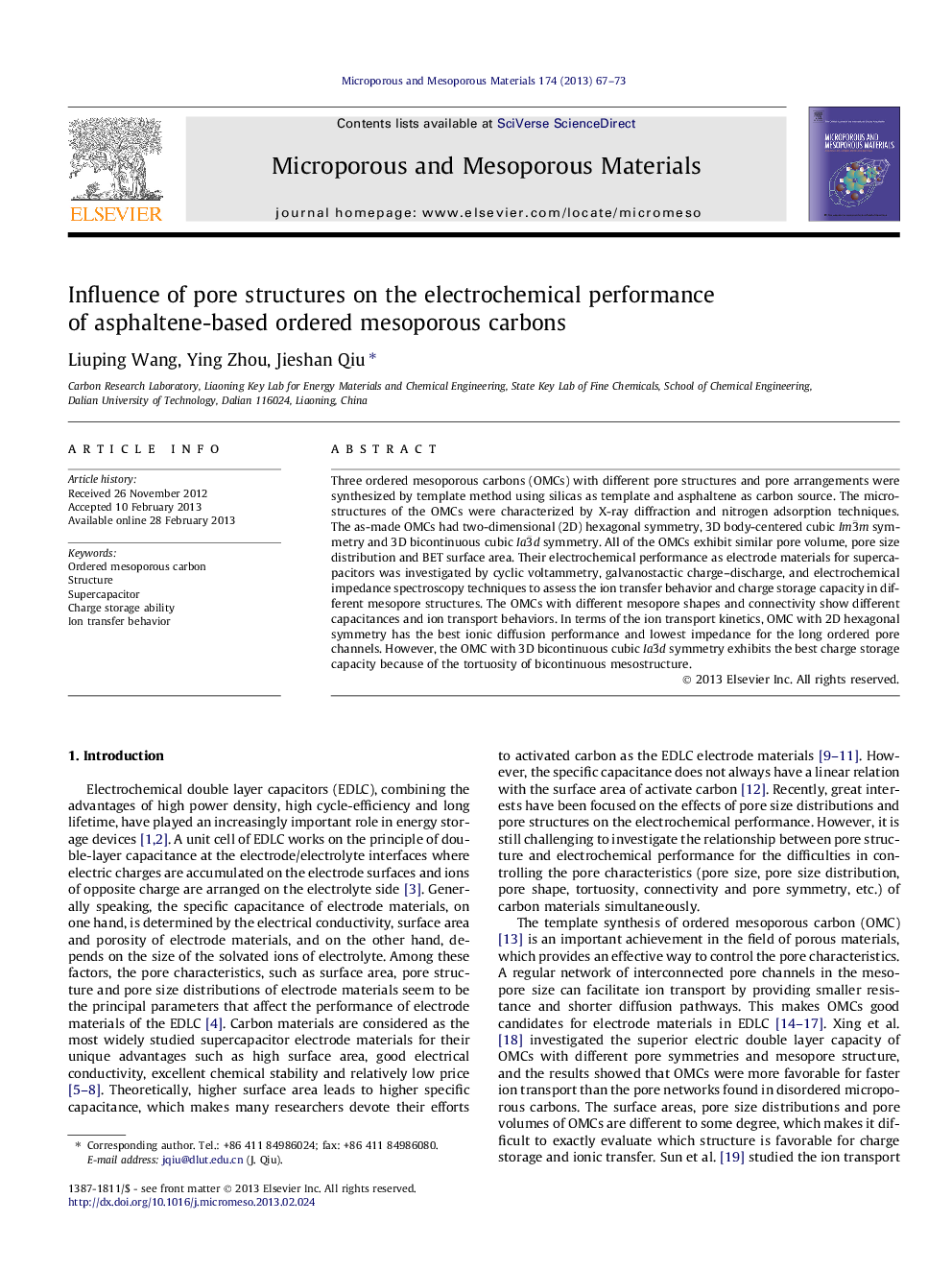| Article ID | Journal | Published Year | Pages | File Type |
|---|---|---|---|---|
| 73637 | Microporous and Mesoporous Materials | 2013 | 7 Pages |
Three ordered mesoporous carbons (OMCs) with different pore structures and pore arrangements were synthesized by template method using silicas as template and asphaltene as carbon source. The microstructures of the OMCs were characterized by X-ray diffraction and nitrogen adsorption techniques. The as-made OMCs had two-dimensional (2D) hexagonal symmetry, 3D body-centered cubic Im3¯m symmetry and 3D bicontinuous cubic Ia3¯d symmetry. All of the OMCs exhibit similar pore volume, pore size distribution and BET surface area. Their electrochemical performance as electrode materials for supercapacitors was investigated by cyclic voltammetry, galvanostactic charge–discharge, and electrochemical impedance spectroscopy techniques to assess the ion transfer behavior and charge storage capacity in different mesopore structures. The OMCs with different mesopore shapes and connectivity show different capacitances and ion transport behaviors. In terms of the ion transport kinetics, OMC with 2D hexagonal symmetry has the best ionic diffusion performance and lowest impedance for the long ordered pore channels. However, the OMC with 3D bicontinuous cubic Ia3¯d symmetry exhibits the best charge storage capacity because of the tortuosity of bicontinuous mesostructure.
Graphical abstractFigure optionsDownload full-size imageDownload as PowerPoint slideHighlights► Ordered mesoporous carbons (OMCs) are made from asphaltene. ► The pore structure of the OMCs can be tuned in terms of size and symmetry. ► Charge storage capacity and ion transfer behavior depends on the pore symmetry.
